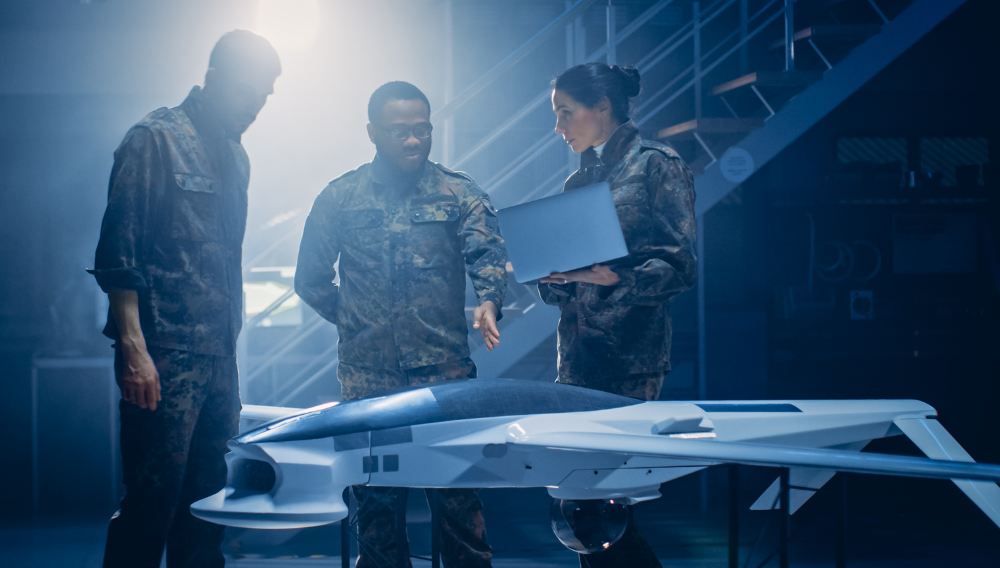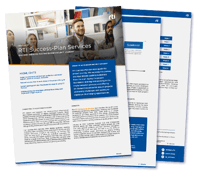4 min read
Fast Isn’t Enough: Winning the Autonomy Race with a Modular Foundation
 John Breitenbach
:
June 10, 2025
John Breitenbach
:
June 10, 2025

The U.S. Department of Defense has made one thing clear: we need to move faster – starting yesterday. Between Replicator, DIU-backed innovation, and the increasing adoption of commercial tech in defense, programs are shifting from lengthy acquisition timelines to models focused on speed and immediacy. Across every domain, the emphasis is now on fielding autonomous capabilities faster – and at scale.
But as speed takes center stage, it’s worth asking: what are we leaving behind in the process?
Too often, the answer is architecture – specifically, the foundational principles of the Modular Open Systems Approach (MOSA). For the last decade, MOSA has been a strategic priority. And for good reason: it’s the key to building systems that can evolve, integrate, and survive in contested, multi-domain environments. MOSA wasn’t about bureaucracy – it was the long-term answer to the problem of vendor lock-in and brittle, one-off solutions.
In the world of autonomy – where flexibility, interoperability, and upgradeability are essential – abandoning those principles doesn’t just introduce risk. It limits relevance. And it can put development teams in a very risky situation.
The Temptation to Move Fast – and Forget the Essentials
The appeal of rapid acquisition pathways is understandable. Traditional programs often struggle to keep pace with the speed of threat evolution, especially in domains such as electronic warfare, counter-UAS, and other areas that have proven immensely valuable in recent conflicts.
But in this push for speed, MOSA is sometimes treated as optional. System architects assume they can build fast now and worry about integration later. That approach might work for a single prototype, but autonomy doesn’t live in a vacuum – as more systems are deployed, the greater the risk further down the road.
Without a modular, standards-based foundation, autonomy can’t scale. Worse – it can’t adapt. And adaptation is the whole point.
Why MOSA Still Matters in an Age of Autonomy
MOSA is more than a procurement requirement. It’s a design strategy rooted in flexibility and longevity. It allows systems to be built from interchangeable components using open standards and well-defined interfaces. This approach ensures that what’s deployed today can still serve tomorrow, without teams having to build an entirely new system from the ground up.
The five principles of MOSA – enabling environments, modular design, key interfaces, open standards, and conformance – exist to protect long-term capability, not limit innovation. In fact, they enable it through a common architecture and migration path.
Take modular design: it gives autonomy developers the freedom to iterate and deploy new capabilities without the need for a completely new system. This adaptability is crucial when responding to new theaters, new missions, and rapidly evolving threats.
Or consider open standards. These create the interoperability essential for joint and coalition missions – a requirement that has only grown more critical in recent conflicts, where integration across platforms and allies can’t be an afterthought and has proven to be highly essential.
Defined interfaces ensure that different vendors and systems can collaborate, upgrade, and scale without costly integration efforts or lock-in. This fosters a healthier, more competitive defense ecosystem.
And finally, conformance ensures that systems built on MOSA principles actually work as expected – under operational pressure, not just in the lab.
Most importantly, these aren’t theoretical advantages. They are the difference between a system that works in concept and one that supports the warfighter for years and various mission types.
A Path Forward: Fast, But With Foundations
The good news is that moving fast and building right aren’t mutually exclusive. Tools and frameworks already exist to support both goals. For example, data-centric connectivity based on open standards such as DDSTM (Data Distribution Service) is already being used in thousands of real-world systems. They don’t slow development – they make it sustainable.
In fact, these frameworks enforce interface clarity, support modular integration, and enable real-time data sharing between distributed systems.
In the upcoming fight, particularly with the use of AI, data will decide/define victory. To help teams support this approach and avoid data silos, the RTI Connext software framework is based on the principle of data centricity, in which the shared data is the interface to other systems. And as the world’s leading implementation of the DDS standard, Connext is currently supporting $1T+ in defense and aerospace programs that prioritize data in motion as the most important asset in mission-critical systems across land, sea, air, and space.
What the Defense Industry Must Contend With
We’re at an interesting point. On one side, traditional primes and programs are slowly aligning with MOSA – balancing long timelines and complex requirements. On the other hand, a new class of defense companies is fielding capabilities in months, not years.
The challenge is not choosing between the two. It’s merging them. Combining both worlds.
Defense needs to move at the pace of DIU-led innovation, but with the resilience and interoperability needed for JADC2. That requires including architectural principles into every layer, starting from day one. Because fielding fast cannot be done correctly without the right approach.
Autonomy, AI, edge compute – these technologies demand openness, modularity, and adaptability.
Final Thought: The Speed of Relevance Requires Architecture
Winning the next fight will require more than speed. It requires systems that can plug in, scale out, and evolve quickly and securely. That means embracing architecture – early and often.
MOSA may not make headlines like Replicator or AI-enabled drone swarms. But without it, none of those systems will last. If we want autonomy to be more than a concept that we are currently demoing, we have to stop treating open architecture and the wisdom of MOSA as optional.
Because in modern defense, speed gets you to the starting line. Architecture gets you to the finish.
You can meet with RTI 1-on-1 this summer in Booth #415 at the MOSA Industry and Government Summit and Expo, running from August 27-29 in National Harbor, Maryland.
About the author:

John Breitenbach, Director Aerospace & Defense Markets, RTI
John Breitenbach is Director of Aerospace & Defense Markets for Real-Time Innovations. He has over 30 years of experience designing software for intelligent machines. He’s worked on industrial, medical, consumer and military products - everything from artificial hearts to autonomous vehicles to elevators.
Posts by Tag
- Developers/Engineer (180)
- Technology (79)
- Connext Suite (77)
- News & Events (75)
- 2020 (54)
- Standards & Consortia (51)
- Aerospace & Defense (50)
- Automotive (38)
- 2023 (34)
- 2022 (29)
- IIoT (27)
- Leadership (24)
- 2025 (23)
- Healthcare (23)
- 2024 (22)
- Connectivity Technology (21)
- Cybersecurity (20)
- 2021 (18)
- Culture & Careers (15)
- Military Avionics (15)
- FACE (13)
- Connext Pro (10)
- JADC2 (10)
- ROS 2 (10)
- Connext Tools (7)
- Connext Micro (6)
- Databus (6)
- Transportation (5)
- Case + Code (4)
- Connext (4)
- Connext Cert (4)
- Energy Systems (4)
- FACE Technical Standard (4)
- AI (3)
- Oil & Gas (3)
- Research (3)
- Robotics (3)
- #A&D (2)
- Connext Conference (2)
- Edge Computing (2)
- MDO (2)
- MS&T (2)
- RTI Labs (2)
- TSN (2)
- ABMS (1)
- C4ISR (1)
- DOD (1)
- Golden Dome (1)
- ISO 26262 (1)
- L3Harris (1)
- LabView (1)
- MOSA (1)
- MathWorks (1)
- National Instruments (1)
- Simulation (1)
- Tech Talks (1)
- UAM (1)
- Videos (1)
- eVTOL (1)
 Success-Plan Services
Success-Plan Services